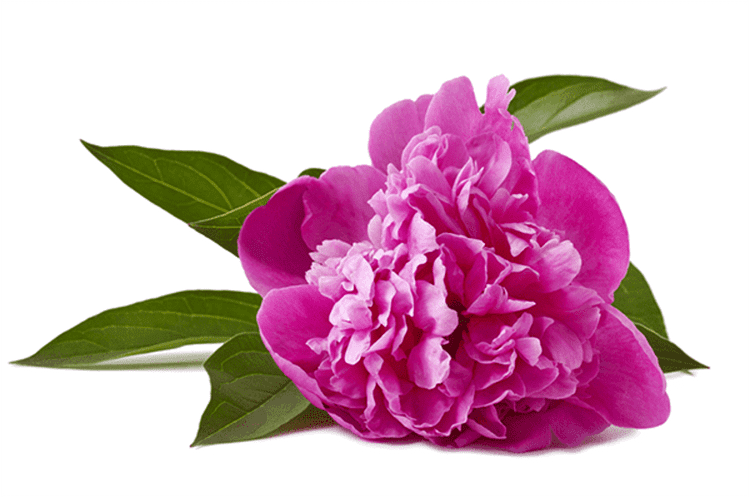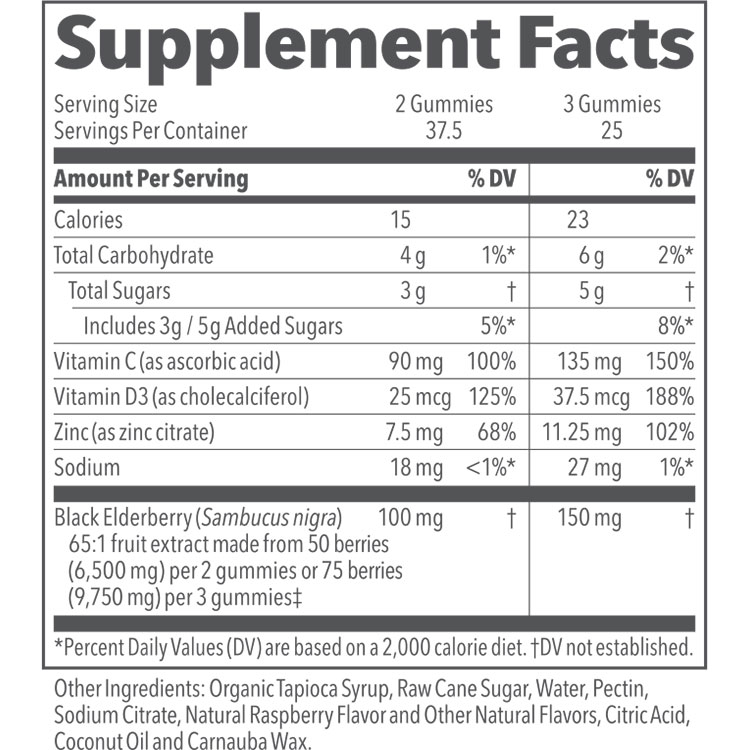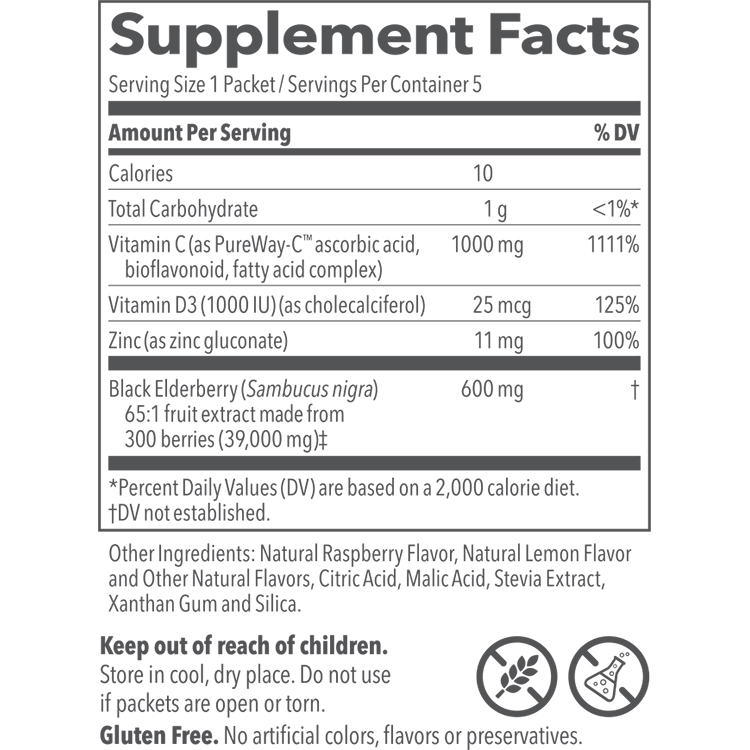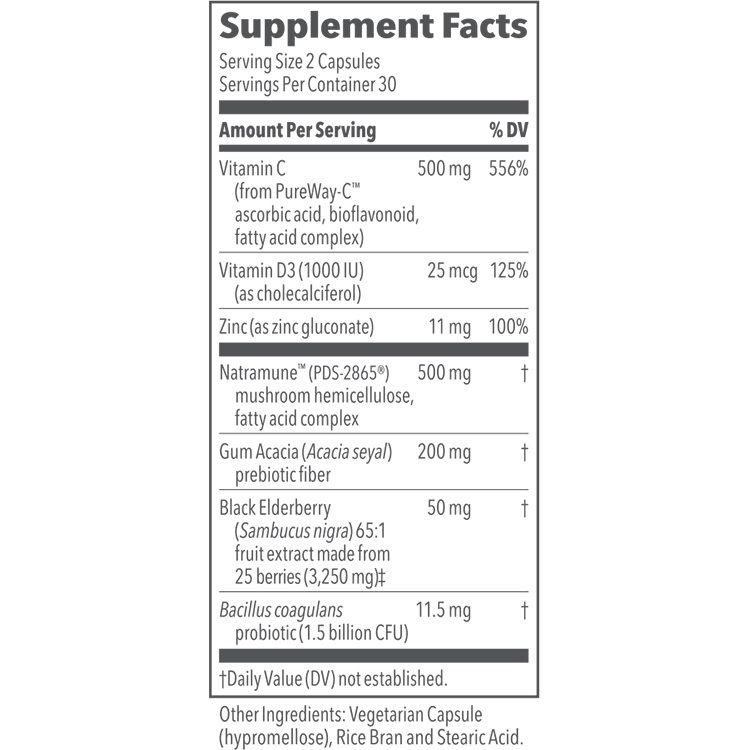BACKGROUND
Ingredient Type: Botanical
Also Known As: Paeonia lactiflora, Common garden peony, Herbaceous peony

The peony plant is native to Asia, Europe, and Western North America and is considered an herbaceous perennial plant. This plant comes in various sizes up to 11 feet, is quite fragrant, and has been seen in various colors: pink, purple, red, white, and yellow. Historically this plant, more specifically its root, has been used traditionally in Chinese, Japanese and Korean medicine. In the Asian communities, this plant has been consumed in various forms, such as tea, as a garnish on salads or other dishes, or in soups. In Europe, the peony plant is one of the most utilized flowers.
Along with the plum blossom, the Peony is considered one of the floral plant symbols in China. In Chinese, it is known as the “flower of riches and honor” or the “king of flowers.” To date, peonies grown in the Chinese city of Luoyang, have a reputation of being the finest quality in the country (4).
During the middle ages, the seeds of the Peony plant were considered medicinally significant. It was even believed that if a woodpecker saw you digging up peony roots, it would peck out your eyes. In Siberian folklore, the red peonies, known as Kosovo peonies, represent the blood of Siberian warriors who died in the battle of Kosovo (3). Similarly, in the Japanese culture, peonies have been associated with warrior-heroes and can be seen amongst art with a masculine motif such as tattoos. Much of this association is attributed to the artist’s illustrative inspiration in the Chinese novel, Suikoden (4).
TRADITIONAL USES
The Peony plant’s uses have dated back to the myths and legends of many cultures, down to the origin of the name, Paeon, the physician of the Greek gods. Paeon had claimed to discover that the root could help ease the pain of childbirth (4). It was believed that peonies were used amongst the Greeks and Christians from the Middle Ages to treat stomach pains, bladder issues, jaundice, labor pains, and even nightmares and other neurological problems.
In traditional Chinese medicine, the Peony’s root has been used for centuries to treat rheumatoid arthritis, systemic lupus erythematosus, hepatitis, dysmenorrhea, muscle cramping, spasms, and even fever (2). Currently today, aside from its medicinal purposes, Peony has also been widely used in the cosmetics and beauty industry, where it is added for its cleansing and moisturizing qualities (4).
WHAT DOES SCIENCE TELL US?
Peony Possibly Supports the Immune System:
In a recent study, the use of the Paeonia lactiflora root constituents (paeoniflorin “PF” and albiflorin “AF”) were investigated for their hematopoietic effects on mice radiotherapy-induced myelosuppression. In this study, it was noted that consumption of the P. lactiflora induced a significant increase in white blood cell production and a reversal of thymus atrophy, which was probably also induced by radiotherapy. It was also noted that there were decreases in associated inflammatory markers (tumor necrosis factor-a) and respective increases in general immune stimulation (granulocyte-macrophage colony-stimulating factor and interleukin-3) and mRNA production in the spleen (GM-CSF & G-CSF) and bone marrow (G-CSF & GM-CSF). It was suggestive from the results that particular constituents of the P. lactiflora root may promote the recovery of bone marrow hemopoietic function (1).
As known in the uses of Chinese, Japanese, and Korean Traditional Medicine, components of P. Lactiflora have been used for years to treat rheumatoid arthritis, systemic lupus erythematosus, hepatitis, dysmenorrhea, muscle cramps, spasms, and fever. This particular study was conducted to assess the mechanistic effects of P. lactiflora in vitro and in vitro. A water/ethanol extract of the P. lactiflora root is known to contain more than 15 components that potentially account for the pharmacological effects observed from the plant. In animal studies, it was reported that there were noted protective effects of the cells against oxidative stress and direct anti-inflammatory effects of both acute and subacute inflammation through the inhibition of certain inflammatory markers (prostaglandin E2, leukotriene B4, and nitric oxide). In vitro, it was noted that there was an immunomodulatory effect (lymphocyte proliferation, differentiation of Th/Ts lymphocytes, production of proinflammatory cytokines, and antibodies). In vivo, there was a noted inhibition of the delayed inflammatory response (delayed-type hypersensitivity) in immune-activation subjects. At the same time, it enhanced the inflammatory response in subjects with immune-suppression (2).
TGP is known to have anti-inflammatory, immunomodulatory, and protective effects on endothelial cells. Assessing the mechanistic features would allow researchers to understand the best uses of TGP better. A recent study assessed the effectivity of the active ingredient of peony roots, the total glucosides of Peony (TGP), as a potential treatment for allergic asthma. In this study, allergic asthma was induced in mice by administering injections with ovalbumin (OVA) mixed with a hydroxide gel and inhaling the nebulized OVA. The mice were then treated with an oral suspension of TGP. The anti-asthmatic treatment effect was studied by testing airway hyperresponsiveness through classification and quantity of elicited leukocyte production, cytokine assay analysis, and lung histopathology assessment. From the results, it was assessed that the OVA-induced allergic asthma in the mice was improved from the analysis of lung tissue pathology, which yielded a decrease in inflammatory cell infiltration and collagen deposition. The TGP was also noted to have lowered the leukocyte, eosinophil, and neutrophil counts along with the chemokines and cytokines. This response was further confirmed with the inhibition of the Ca2+ influx in mast cell degranulation, representing a significant decrease in the inflammatory response due to the OVA-induction. The findings suggest that TGP was able to significantly improve the OVA-induced allergic asthma by suppressing the Ca2+ influx in mast cell degranulation (8).
Peony Possibly has Antioxidant Properties:
One study was conducted to assess the neuroprotective effects of P. lactiflora roots on rat cortical cells exposed to oxidative stress induced by H2O2. A methanolic extract of P. lactiflora was incorporated into seven monoterpenes administered, isolated, and further separated for analysis to determine which exhibited mechanistically useful effects against H2O2 induced neurotoxicity. Of the seven monoterpenes were: paeonilactone-B, paeonilactone-C, paeoniflorigenone, benzolypaeoniflorin, paeoniflorin, oxypaeoniflorin, and albiflorin. Of the seven compounds tested, paeonilactone-C and benzolypaeoniflorin were noted to exhibit significant protective effects in the rat cortical cells against H2O2 induced neurotoxicity (7).
Another study was conducted to investigate the chemical profile and antioxidant activities of peony seed oil (PSO). Upon chemical analysis, it was revealed that PSO is comprised of an uncommonly high portion of a-linolenic acid (>38%), a fairly low ratio of n-6 to n-3 polyunsaturated fatty acids (0.69), and a much higher content of y-tocopherol than conventional seed oils in the market. An in vitro assay indicated that the PSO is quite the scavenger of free radicals, even more so than extra virgin olive oil. According to the research, even a moderate PSO intake exhibited hepatoprotective effects against oxidative damage in mice and diet-induced hyperlipidemia in rats. From the analysis of the mechanism behind PSO’s antioxidative effects, it was noted that such activity is directly related to PSO’s chemical composition. This novel study provided supportive evidence for the health effects of PSO for which further research is warranted to determine the medicinal and nutritional applications of PSO (11).
Peony Possibly Helps Relieve Pain:
- lactiflora has been known to be used in Traditional Chinese Medicine for numerous years to treat painful or inflammatory disorders. The specific component noted to have these effects is the water/ethanol extract of P. lactiflora known as the total glycosides, in which paeoniflorin is the major active component. According to this research, many pre-clinical studies have pointed to P. lactiflora’s ability to diminish pain, joint swelling, synovial hypertrophy, and even the severity of bone erosion and cartilage degradation in experimental arthritis. It is also known to inhibit the proliferation of lymphocytes and fibroblast-like synoviocytes, the formation of new blood vessels, and the production of matrix metalloproteinases. According to the recorded clinical data, the use of the total glycosides of paeony has occurred without significant adverse effects. Recently, the total glycosides of paeony have been widely used to treat rheumatoid arthritis in China (6).
Another very recent study has investigated the effects of P. lactiflora on migraine headaches. The headaches were induced through intraperitoneal injections of nitroglycerin (NTG) (10 mg/kg) in rats. The pretreatment of P. lactiflora (PL) was administered orally 30 minutes before the NTG injection. The migraine headache behavior was then observed through video recordings along with immunohistochemistry of excised brain tissue. The effectiveness was measured based on a series of behaviors from sniffing in exploratory behavior, walking in locomotor behavior, time spent in certain environments, and traveling distances of the rats. The results noted that those subjects pretreated with the PL had amelioration of the migraine headache behaviors compared to the non-PL treated group. The PL treatment was related to noted decreases in c-fos and CGRP in the TNC. Although further research is needed to support this data, it was suggested that pretreatment with PL might be beneficial for migraine headaches (10).
Peony Possibly has Anti-Microbial Properties:
In a recent study, a P. lactiflora ethanol extract was tested against Candida albicans to determine if there was a potential antifungal activity associated with the plant. They hypothesized that the extract might have synergistic effects in preventing cell wall synthesis, enabling membrane degradation, therefore compromising the permeability and potentially supporting a combination of therapies to address such fungal infections. In the analysis of this study, it was shown that the P. lactiflora extract was able to damage the integrity of the C. albicans cell wall. This was confirmed through staining with a membrane-impermeable dye, propidium iodide. When analyzed, the membrane depolarization manifested as an increased fluorescence intensity by staining the P. lactiflora treated C. albicans cells with the membrane-potential marker. The cells exhibited significant uptake of the crystal violet solution in a concentration-dependent manner. It was concluded from the findings that P. lactiflora extract is a viable and effective option for the treatment of Candida-associated conditions (9).
SAFETY
Extremely limited if any human research has been conducted on Peony use, and therefore there is not much information related to the safety of consumption for long-term durations. When consumed orally for brief periods, Peony is considered safe. From the limited conducted research studies, it was noted that Peony seemed to be well tolerated. Although safety and toxic information are limited for Peony aside from pets, no significant toxicity has been reported for human consumption.
Interactions:
Again, due to the limited research revolving around the safety and toxicity of Peony, limited information is available for the associated drug and supplement interactions.
Those currently on anticoagulant/antiplatelet medications are advised to consult their healthcare provider before the consumption of Peony. As Peony may slow blood clotting, chances of bleeding and bruising may occur if not properly dosed and regulated. Some of the medications used to slow blood clotting include aspirin, clopidogrel, diclofenac, ibuprofen, naproxen, dalteparin, enoxaparin, heparin, warfarin, amongst others (5).
Side-Effects:
Special precautions are asked to be taken when planning to consume Peony for those who are pregnant and breastfeeding, those with bleeding disorders, and those who are planning on having surgery. In traditional Chinese medicine, Peony has been used to treat menstrual-associated pain, and bleeding associated with lacerations and nose bleeds due to it being a coagulant agent.
Additionally noted, certain components P. lactiflora consumed at higher levels have been noted to produce certain gastrointestinal tract disturbances such as diarrhea, as seen in certain studies (2).
If pregnant, it is not recommended to consume Peony as more recent research has indicated that peony consumption can potentially promote uterine contractions. For those who are nursing, it is not recommended to consume Peony as there is not enough research surrounding the safety and health of nursing infants to justify its consumption. Due to the clotting quality of Peony, it is also advised to avoid if there is a concern for or current bleeding disorder. Similarly, those preparing for surgery should cease the use of Peony until after the procedure. If one is uncertain of the use of Peony or is with any of the noted conditions above, it is advised to consult your healthcare provider regarding the potential consumption of Peony (5).
REFERENCES
- Zhu Y, Wang L, Yang Z, Wang J, Li W, Zhou J, Zhang J. Hematopoietic Effects of Paeoniflorin and Albiflorin on Radiotherapy-Induced Myelosuppression Mice. Evid Based Complement Alternat Med. 2016; 2016: 5789381.
- He Dy, Dai SM. Anti-Inflammatory and Immunomodulatory Effects of Paeonia Lactiflora Pall., a Traditional Chinese Herbal Medicine. Front Pharmacol. 2011;2: 10.
- A Pilgrimage to Kosovo Today. http://www.kosovo.net/pilgrimg.html. Accessed 17 August 2019.
- Peony. https://www.herbazest.com/herbs/peony. Accessed 17 August 2019.
- Peony. https://www.rxlist.com/peony/supplements.htm. Accessed 17 August 2019.
- Zhang W, Dai SM. Mechanisms Involved in the Therapeutic Effects of Paeonia Lactiflora Pallas in Rheumatoid Arthritis. Int Immunopharmacol. 2012;14(1): 27-31.
- Kim SH, Lee MK, Lee KY, et al. Chemical Constituents Isolated from Paeonia lactiflora Roots and Their Neuroprotective Activity Against Oxidative Stress in Vitro. J Enzyme Inhib Med Chem. 2009;24(5): 1138-1140.
- Shou Q, Lang J, Jin L, et al. Total Glucosides of Peony Improve Ovalbumin-Induced Allergic Asthma by Inhibiting Mast Cell Degranulation. J Ethnopharmacol. 2019;244: 112136. doi: 10.1016/j.jep.2019.112136.
- Lee HS, Kim Y. Paeonia lactiflora Inhibits Cell Wall Synthesis and Triggers Membrane Depolarization in Candida albicans. J Microbiol Biotechnol. 2017;27(2): 395-404.
- Liao CC, Li JM, Chen CH, Lin CL, Hsieh CL. Effect of Paeonia lactiflora, a Traditional Chinese Herb, on Migraines Based on Clinical Application and Animal Behavior Analyses. Biomed Pharmacother. 2019;118: 109276.
- Yang X, Zhang D, Song L, et al. Chemical Profile and Antioxidant Activity of the Oil from Peony Seeds Paeonia suffruticosa Andr. Oxidative Medicine and Cellular Longevity. 2017: 9164905.




